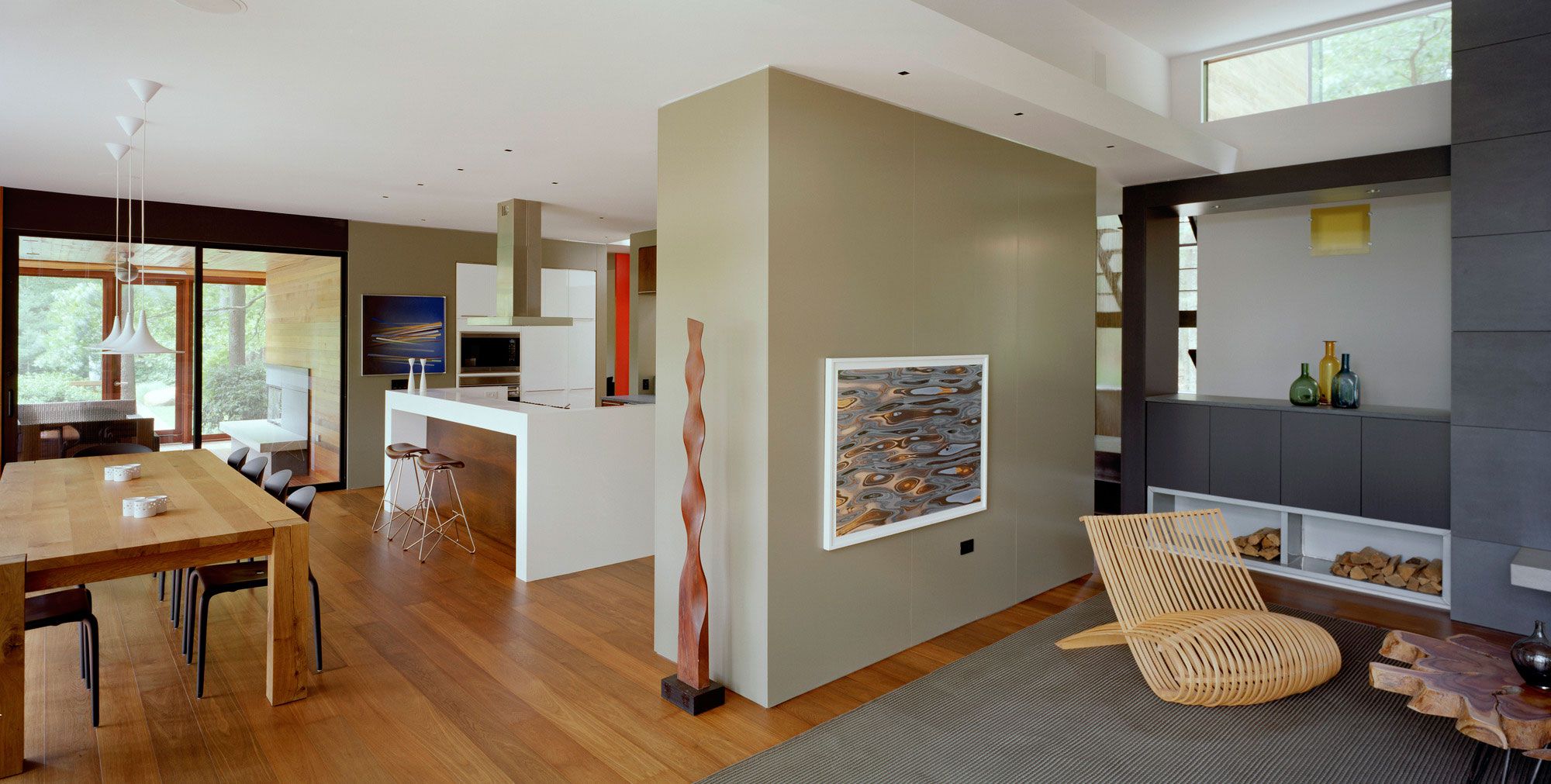Kettle Hole House by Robert Young
Architects:Robert Young
Location: East Hampton, New York, USA
Year: 2008
Photo courtesy:Frank Oudeman
Description:
This venture grew naturally to react to our customer’s seven section of land site, which was protected by white pines, offered unhampered perspectives of the water, and housed a lovely pot lake.
 The property contained a current house, constructed in 1982, which needed a noteworthy remodel. On account of genuine decay and the low nature of the starting development, it was not clear that a rebuilding would cost not as much as another house.
The property contained a current house, constructed in 1982, which needed a noteworthy remodel. On account of genuine decay and the low nature of the starting development, it was not clear that a rebuilding would cost not as much as another house.
Our sense is dependably to spare and reuse things as opposed to discard them, so we were quick to discover approaches to keep the house financially.
Overviews of the property demonstrated that the house was closer to the pot lake than momentum town difficulties would permit; if we somehow happened to manufacture another house instead of revamp, it would need to be pushed back closer to the property line, trading off the security and water sees that made this package so engaging.


This took into consideration additional space, as well as drastically enhanced the ungainly stream between the current spaces.
Without moving burden bearing dividers, we combined the kitchen, living and feasting zones into an open, streaming arrangement.
We changed the house’s presence with an economy of means utilizing new siding and windows with complementing concrete boards.
The austere “storehouse” stairwell was supplanted with a rectangular stair tower with a straightforward yet fragile stair of darkened steel.
Wide scopes of glass and outside materials that traverse into the insides, for example, the cedar siding and bond boards, obscure the line in the middle of all around.
The inside palette of regular materials, hues, and fabrics is compared with intermittent solid differentiating components, supplementing the encompassing forest.




















